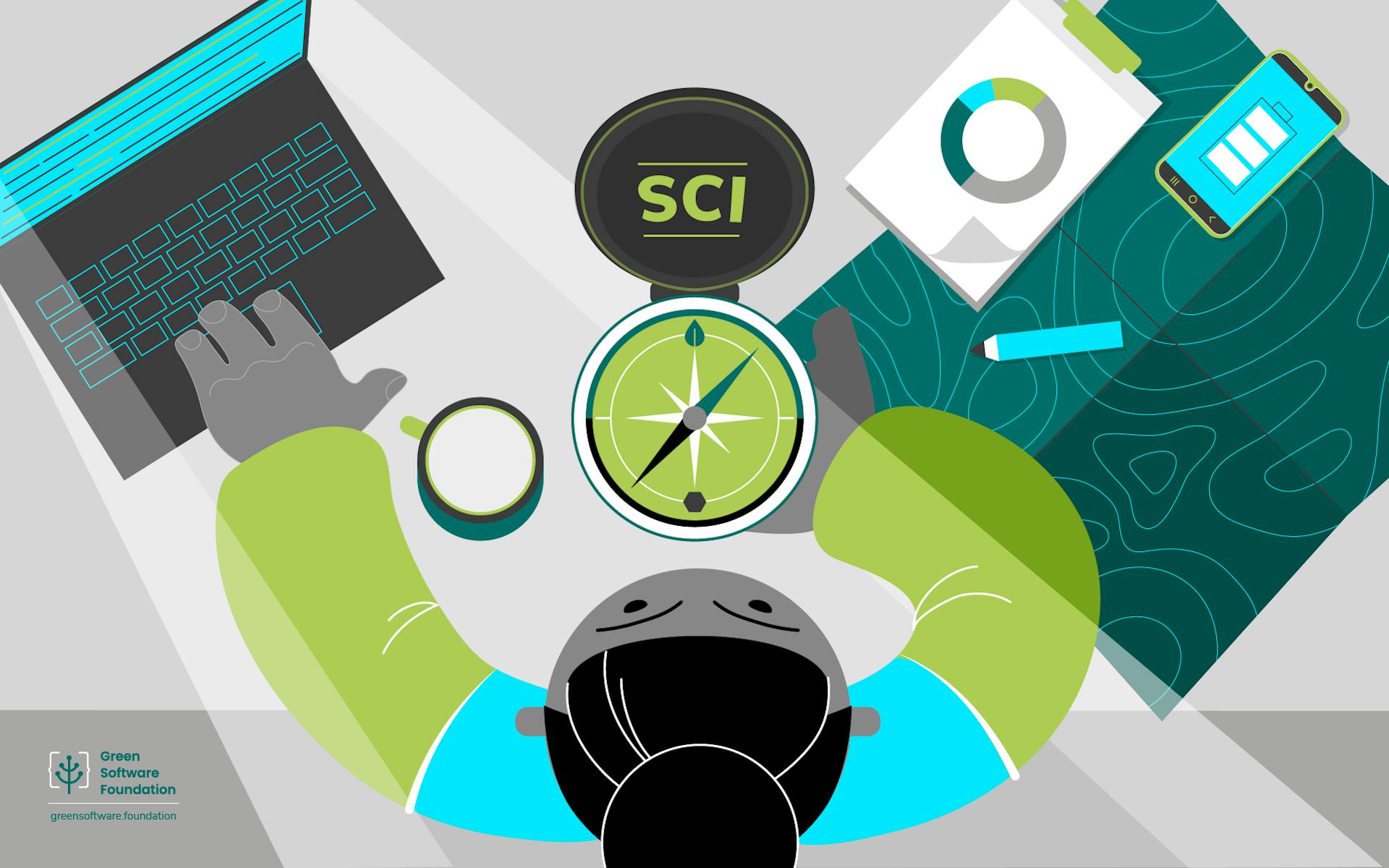Software powers much of our modern world, from personal productivity to organizational transformations. Software can also play a critical role in addressing global challenges, such as accessibility and climate change. But as we’ve learned from accessibility, software must first be designed inclusively so it can enable inclusion. The same is true for climate change. When writing or selecting software, developers need to think about its carbon emissions, and quickly go from thought to action. In short, we need a way to measure the least carbon-intensive software solution down to the code level.
As part of its mission to help the software industry contribute to a more sustainable future, the Green Software Foundation is proud to release the alpha version of the Software Carbon Intensity (SCI) Specification, which is a method for scoring a software system based on its carbon emissions. The SCI is a tool that enables developers to easily account for software carbon intensity in their day-to-day work in the same way they consider cost, performance, security, accessibility and other concerns today.
The SCI was created through the Standards Working Group of the Green Software Foundation, the international coalition of nonprofits, academia, and industry leaders.
The alpha version of the SCI is being released today for broader public comment and input, which can be done on GitHub or by emailing [email protected]. All submissions will be taken into consideration for publishing the official version 1.0 of this new specification.
What is the SCI and how is it different from a carbon footprint?
The SCI can serve as a compass for reducing the total carbon footprint of software. Rather than the traditional annual sustainability reporting approach of calculating the total carbon footprint of a software system, the SCI is focused on providing information about how to reduce it as you build the software solution itself.
The SCI is not a total carbon footprint; it's a rate of carbon emissions for software, such as per minute or per user device, that can serve as an important benchmark to compare the carbon intensity of a software system as it is updated over time; or between similar types of software systems, such as messaging apps or video conferencing solutions.
There are three key ways to reduce the carbon emissions of software:
Use less hardware; such as reducing the size of upgrades to enable users to keep their old devices longer, or architecting cloud applications to use fewer machines.
Use less energy; such as improving the speed of users’ task completion or server performance so that software runs more efficiently and consumes fewer resources.
Or do more when energy supply is cleaner and less when energy supply is dirtier, which is known as carbon awareness. An example is scheduling routine backups to occur during peak times of solar energy supply.
The only way to reduce an SCI score is to do one or more of these things. Lower SCI scores are better than higher scores and reaching zero is impossible.
How is an SCI score calculated?
The SCI score is a rate of carbon emissions, not a total. The equation is a simple and elegant solution to the extremely complex problem behind it:
SCI = ((E * I) + M) per R
E = Energy consumed by software in kWh
I = Carbon emitted per kWh of energy, gCO2/kWh
M = Carbon emitted through the hardware that the software is running on
R = Functional Unit; this is how software scales, for example per user or per device
The “per R” is the secret sauce to the SCI. It is what makes the SCI into a tool that works for every software domain, every use case, and every person.
Various tools are available to measure the inputs to the equation above, and the Green Software Foundation will be making tooling recommendations in the future.
SCI makes software comparable
The SCI is a rate, not a total. It is carbon per R, with R changing based on different types of applications.
Totals don't enable comparability; rates do. For example, you can't compare meeting applications by looking at their total carbon footprint because they have different numbers of users and amounts of usage. They should be compared by looking at carbon per minute.
The focus of SCI is reducing emissions
Reducing emissions is an order of magnitude more challenging than offsetting. While offsetting pays someone else to avoid or remove emissions, the world can’t reach net-zero emissions unless we all do our part to also reduce our own impact. While change can be hard and requires investment, the shifting demands of customers, employees, and emerging regulatory requirements all point to the rewards for those who lead on sustainability.
To incentivize investment in reduction, the SCI does not include neutralizations of any kind in its calculation. There are no shortcuts with the SCI. The only path to a better SCI score is to invest time and effort into reducing emissions.
SCI is for every developer and all software
An SCI score can be calculated for any type of application: console games, cloud applications, mobile applications, web applications, or internet of things (IoT) devices. An SCI score can be calculated for a large, distributed enterprise application with a dedicated team, or for a shared open-source library maintained by one individual.
Calculating the SCI is designed to be approachable and straightforward. The Green Software Foundation is dedicated to continuously improving the tooling and data requirements so that developers will be able to calculate an SCI score quickly and at no cost.
SCI was developed as a collaborative global effort
The Green Software Foundation works via consensus, with all members coming together to collaborate and unanimously approve the alpha version of the SCI.
We are proud to roll out the SCI today for public comment. We work in the open, and this is the start of a journey, not a destination.
An invitation
The Foundation will continue to work on the SCI and other emissions reduction tools. However, we cannot do this alone. The Green Software Foundation welcomes comments on our work and invites those passionate about driving change to join us in our mission.
We also welcome early adopters looking to develop case studies of using the SCI to start a conversation on GitHub or by emailing [email protected].
Green Software Foundation Members
Steering Members
Accenture | GitHub | NTT DATA | Thoughtworks | Globant | Microsoft
General Members
Avanade | University of Bristol | Container Solutions | Goldman Sachs | Intesa Sanpaolo | Leaders For Climate Action | Texas State University | The Explorers | Time for the Planet | The Green web Foundation | Shell | Virtasant | VMware | WattTime
This article is licenced under Creative Commons (CC BY 4.0)

